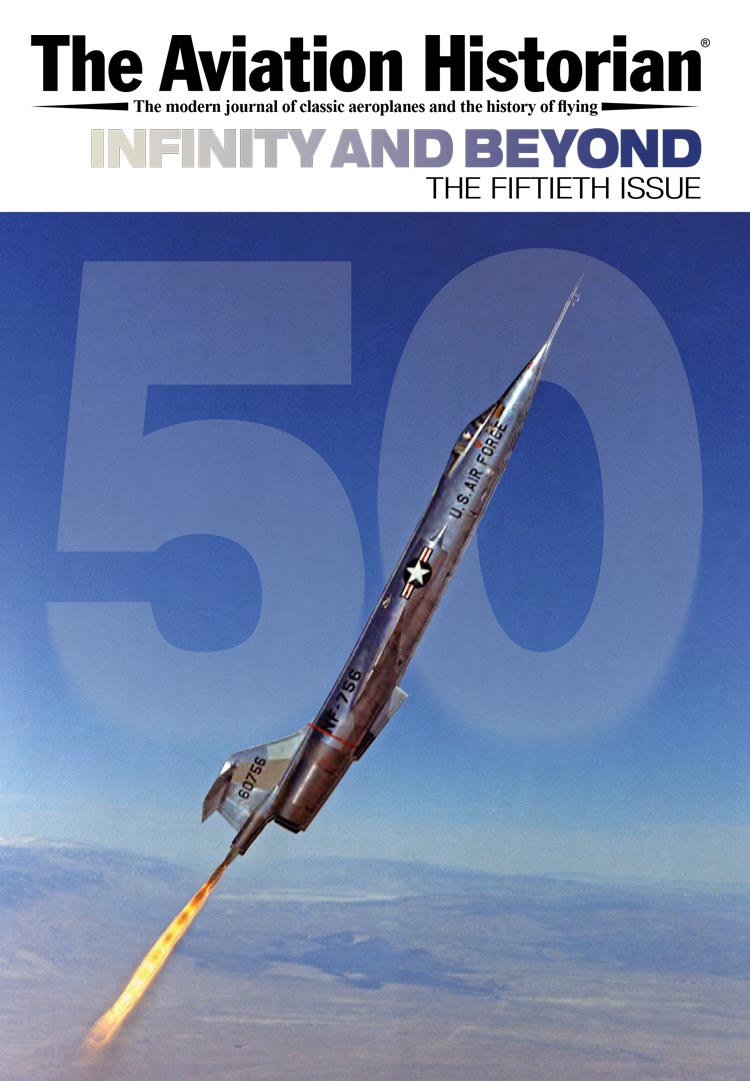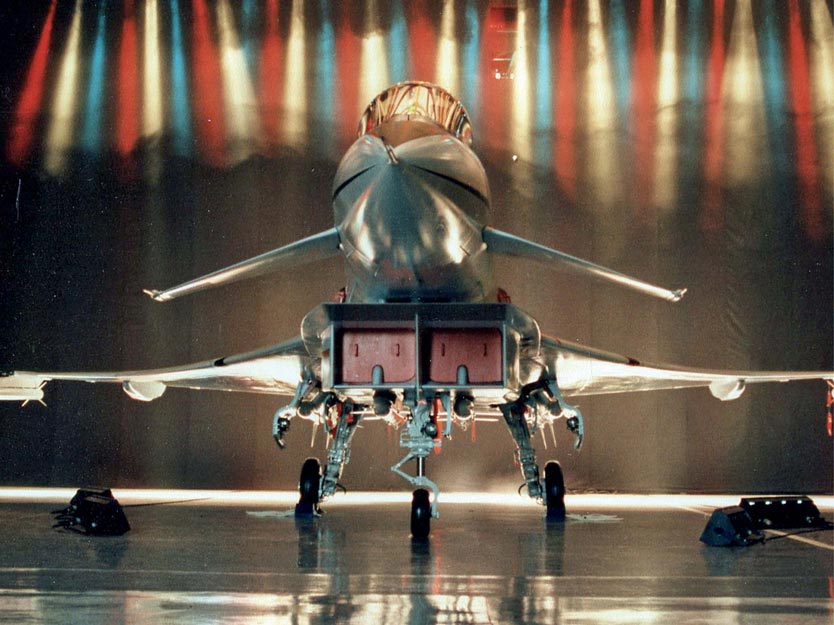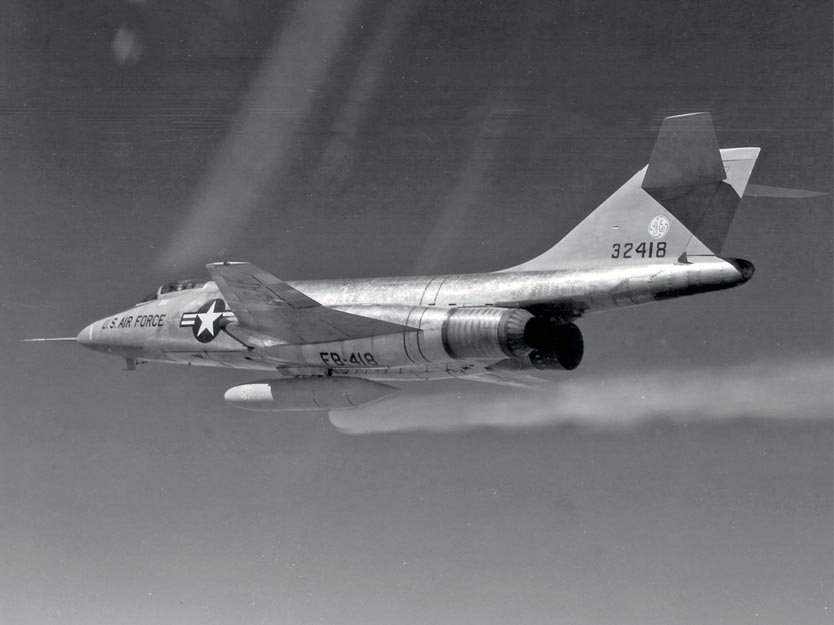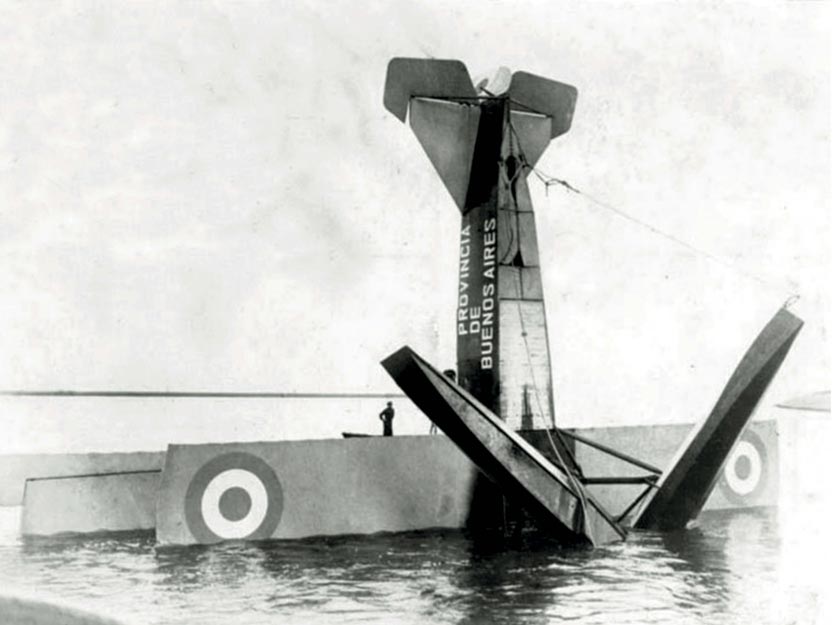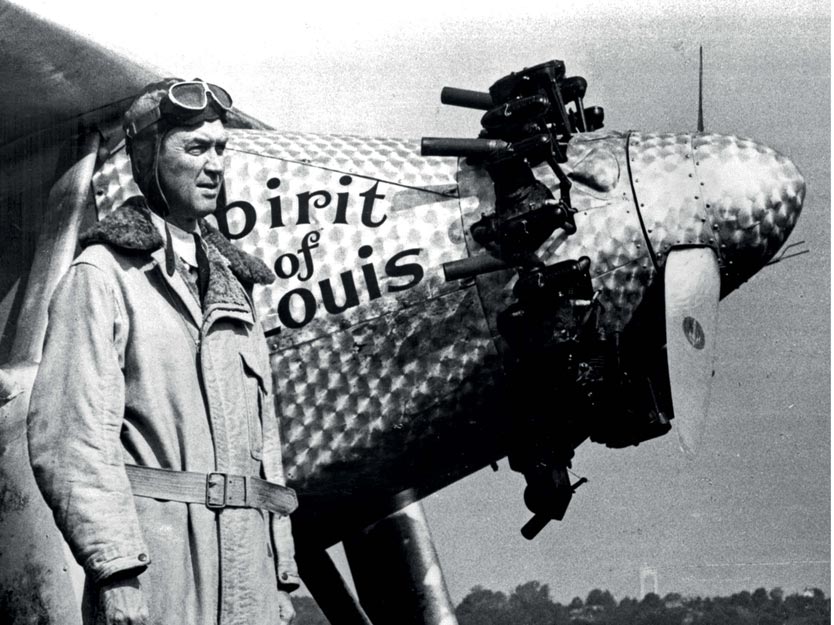Welcome to The Aviation Historian, the print and digital quarterly journal for seasoned enthusiasts who want to explore the lesser-known paths of flying history.
About the latest issue
A very warm welcome to our 50th quarterly issue – the final one before we reinvent TAH as an annual, packaging fresh aviation history of the same superlative quality into a more hefty once-a-year volume. In my first Editor's Letter, back in 2012, I wrote that the aim of our new independent venture was "to encourage the sharing of knowledge among historic aviation's 'true believers', [and] chronicle one of human history's most compelling adventures". With the help of my longstanding (and often long-suffering) team-mates here at TAH, our invaluable Editorial Board and – crucially – you, our readers, I'm extremely proud to be able to say I think we have fulfilled those aims and created something rather special together.
Our cover image for TAH50 – a Lockheed NF-104A Starfighter streaking heavenwards under jet and rocket power – heralds our article by Tony Buttler FRAeS on American jet fighter engine testbeds of the 1950s, a time of rapid progress in powerplant development.
Other major features in the issue include the latest in our series on British aerial weapons, in which author Chris Gibson and technical illustrator Ian Bott (both of them members of TAH's Editorial Board) assess the devastating combination that comprised the Avro Lancaster and its various bomb loads; James Kightly spotlights the distinguished aviation career of Hollywood actor James Stewart; Prof Keith Hayward FRAeS explores the convoluted politics underlying the development of the European Fighter Aircraft in the 1980s; and Edward M. Young charts the remarkable RAF flying career of Thailand's Prince "Nicky" Varanand.
Elsewhere in TAH50 we complete our histories of Trans-Canada Air Lines, of Argentinian pilot Pedro Zanni's ill-fated round-the-world flight attempt 100 years ago, and of the de Havilland Vampire in Rhodesian service; and we examine how the Hawker Siddeley Andover won the race to become the British military's tactical light transport. We also recount the career and mysterious death in a flying accident in the USA in 1954 of Air Cdre Geoffrey Stephenson, CO of the RAF's Central Fighter Establishment.
All of the above – TAH50 and the 49 issues which preceded it – have been made possible by the support I have received from my fellow TAH crew-members — Managing Editor Mick Oakey, our steadfast Production Manager Amanda Stroud, and our Finance Manager Lynn Oakey, queen of the spreadsheet and of the postal system. Lynn's retirement in the spring of 2025 counts as a major milestone for all of us, and we are delighted to have recruited a well-qualified successor from among our own – Mark Russell, one of our armaments specialist authors, joins us as our new Finance Manager.
We hope you will savour Issue 50 of The Aviation Historian, and we look forward to bringing you our first TAH Annual – plus various book and special-issue projects – in due course. Watch this space!

Nick Stroud, Editor
Issue 50: out now

Buy it from our online shop

